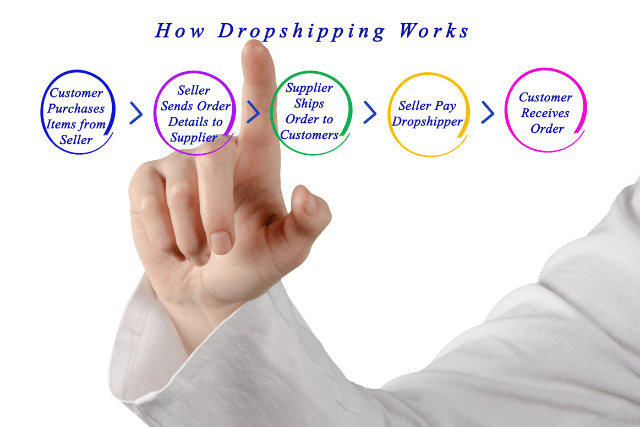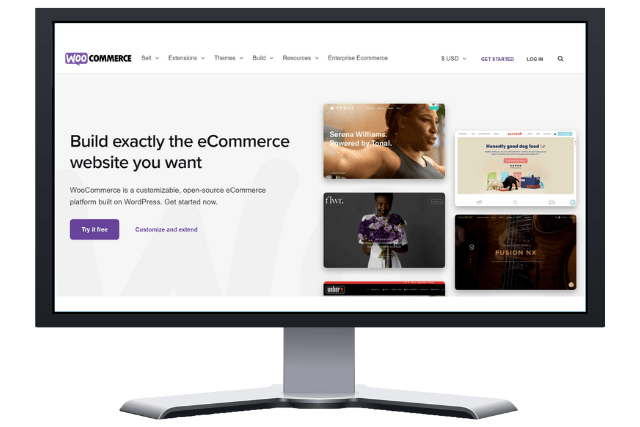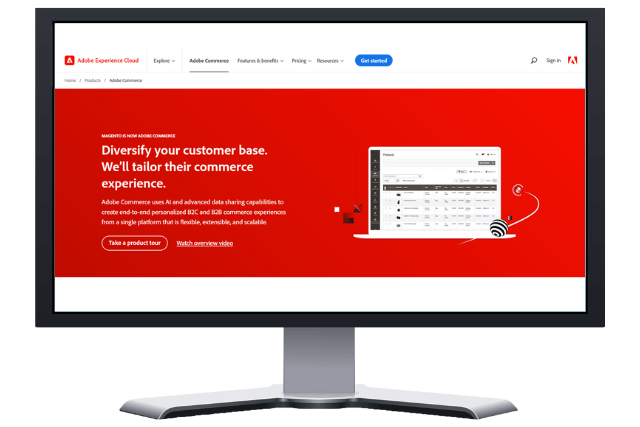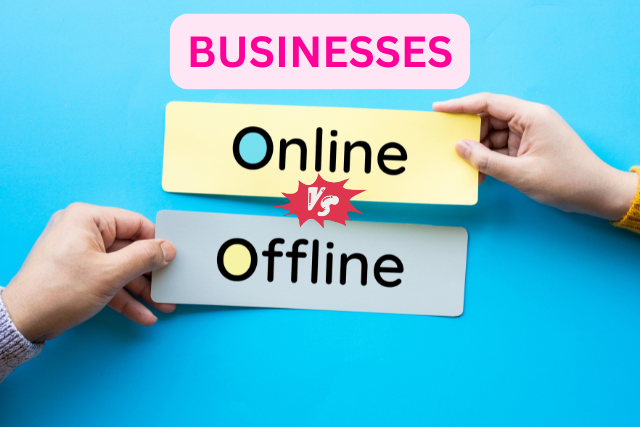Are you looking to start a dropshipping business? This guide covers everything you need to know about dropshipping, getting started with dropshipping, how to find suppliers, and more.
Table of Contents
What is dropshipping?
Dropshipping is a business model in which e-commerce entrepreneurs sell products without carrying any inventory. When a store owner receives an order from a customer, they contact the supplier, who will ship the products directly to the customer’s doorstep. Dropshipping apps like Oberlo let you add products from various suppliers to your shop to fuel your product offering.

The Pros of Dropshipping
Dropshipping is a popular business model because it’s relatively low-risk and easy to set up. There are several advantages to dropshipping:
- Low Startup Costs: Unlike traditional retail models, dropshipping doesn’t require a significant upfront investment. You don’t have to purchase inventory in bulk, so the financial risk is lower.
- Easy to Get Started: With many platforms like Shopify, WooCommerce, or BigCommerce integrating seamlessly with dropshipping tools like Oberlo or AliExpress, setting up a store can be straightforward.
- Flexible Location: You can run a dropshipping business from anywhere with an internet connection. This makes it appealing for digital nomads or those looking for a home-based business.
- Wide Product Selection: Since you don’t have to pre-purchase the products you sell, you can offer a wide variety of products in your store.
- Reduced Overheads: Not having to deal with inventory or manage a warehouse can significantly reduce your expenses, both in terms of money and time.
- Easier Scaling: Since suppliers are in charge of handling the logistics, they will also be responsible for the majority of the work involved in processing additional orders, allowing businesses to scale more smoothly.
- Minimized Risk: Because you don’t hold inventory, you’re not at risk of unsold stock, making it easier to adapt to market trends and shifts without significant financial losses.
- Learn and Adapt Quickly: The low upfront investment allows entrepreneurs to test and try out different products without much financial risk. If a product doesn’t sell well, you can easily drop it from your inventory.
- Direct-to-Customer: Since products are shipped directly to the customer from the supplier, there are often fewer steps in the supply chain, potentially reducing shipping times (though this is contingent on where the supplier is based relative to the customer).
- Reduced Human Resources: No need for staff for inventory management, packaging, or shipping can reduce the complexity of the operation and the costs associated with human resources.
- Flexibility to Test Products: Dropshipping allows business owners to test which products are popular before committing to larger orders or producing their own version of the product.
- No Need for a Physical Store or Warehouse: This further reduces overhead costs as there’s no need to maintain or rent a physical space.
The Cons of Dropshipping
While dropshipping has many advantages, there are also some significant disadvantages that businesses should be aware of before deciding whether or not to enter into this type of arrangement.
Here are some of the cons of dropshipping:
- Low-Profit Margins: The dropshipping space is highly competitive because of its low entry barriers. Many merchants sell products at razor-thin margins, which makes sustainable profit difficult.
- Inventory Issues: Since you don’t stock the inventory you sell, it’s up to your suppliers to maintain inventory levels. If they run out of stock and don’t notify you in time, you might end up selling products that are out of stock, which can lead to customer complaints and tarnish your brand’s reputation.
- Shipping Complexities: Shipping costs and times can vary if you source products from multiple suppliers. This makes it tough to maintain consistent shipping policies and can confuse customers.
- Less Control Over Order Fulfillment and Lead Time: You depend on third-party suppliers to deliver timely orders. If they run into issues, it can negatively impact your business.
- Dependency on Other Businesses: Your business’s success relies on the reliability and efficiency of your suppliers. It can hurt your reputation and bottom line if they let you down.
- Quality Control: You don’t get to see the product before it’s shipped to the customer, making it harder to ensure product quality or catch defective items.
- Potential for Supplier Errors: If a supplier makes a mistake, you must fix it. This can strain customer relations and add more work to your plate.
- Brand Identity and Customer Loyalty: It can be challenging to build a unique brand when you’re selling products from other companies. This can make customer loyalty harder to secure.
- Highly Competitive: The ease of setting up a dropshipping business means many entrepreneurs enter this space. This can lead to a highly saturated market, making differentiation challenging.
- Logistics and Communication: Communicating with suppliers, especially if they’re overseas, can be challenging due to time zones, cultural differences, and language barriers.
- Potential for Fraud: Not all dropshipping suppliers are legitimate. Some might deliver subpar products or not deliver at all.
- Returns and Customer Service: Handling returns can be more complicated since the product needs to be sent back to the supplier. This can lead to longer refund times and dissatisfied customers.
- Limited Customization and Branding: Since products are sent directly from the supplier, there’s limited opportunity to add personal touches or branding to the packaging.
Given these potential issues, it’s essential for prospective dropshippers to do thorough research, vet suppliers carefully, and continuously monitor and manage customer expectations. However, when managed correctly, dropshipping can still be a profitable and viable e-commerce model.
How to Start Dropshipping
Dropshipping is a business model in which e-commerce entrepreneurs sell products without carrying any inventory. When a store owner receives an order from a customer, they contact the supplier, who will ship the products directly to the customer’s doorstep. Dropshipping is a great way to start an online business with little upfront investment.
The main steps to starting a dropshipping business are:
1. Find a Niche
A niche is a defined market with specific needs. When starting an online business, it’s important to find a niche to focus your marketing efforts and better serve your target audience.
There are a few things to consider when finding a niche:
- What problem does your product or service solve?
- Who is your target customer?
- What are your unique selling points?
Once you’ve answered these questions, you should know what direction to take your business in. From there, it’s just a matter of putting in the hard work and dedication needed to succeed.
2. Choose a platform.
Dropshipping is a business model in which e-commerce entrepreneurs sell products without carrying any inventory. When a store owner receives an order from a customer, they contact the supplier, who will ship the products directly to the customer’s door. Dropshipping is a great way to start an online business with little up-front investment.
There are many different platforms that you can use to create a dropshipping store. The most popular platforms are Shopify, WooCommerce, and Magento. These platforms are easy to use and have plenty of resources to help you get started.
Shopify
Shopify is by far the most popular platform for dropshippers. It’s easy to use and has everything you need to get started, including built-in payment processing, shipping labels, and automated email notifications. Plus, tons of apps and themes are available to help you customize your store and stand out from the competition.
Some key features of Shopify include:
- A user-friendly interface for creating and managing online stores
- A wide range of customizable themes and templates
- Integration with popular payment gateways
- Built-in marketing tools, such as email marketing and SEO optimization,
- Inventory management and order tracking
- Support for multiple sales channels, including online, in-store, and social media
- A large app store with various third-party integrations to extend the platform’s functionality
Shopify offers different pricing plans to cater to businesses of all sizes, starting with a basic plan. The platform is compatible with various dropshipping tools, such as Oberlo and Spocket, allowing businesses to source and sell products without holding inventory.

WooCommerce
WooCommerce is a powerful e-commerce platform that enables entrepreneurs to start online stores. It is a popular choice for drop-shippers because it is easy to use and has many features.
If you are new to dropshipping, WooCommerce can be a great option. Here are some things you need to know about using WooCommerce for your dropshipping business:
- Setting up your store: WooCommerce makes setting up your online store easy. You can choose from various themes and plugins to customize your store according to your needs.
- Adding products: You can add products to your WooCommerce store by importing them from Aliexpress or other suppliers. Many plugins are also available that make adding products to your store easy.
- Shipping: WooCommerce offers a variety of different shipping methods. You can add your shipping rates or use WooCommerce’s default rates.
- Analytics: WooCommerce gives you a dashboard to track your store’s performance. You can see how many products are sold, how many orders are made, and more.
- Payments: WooCommerce offers many payment gateways, including PayPal, Stripe, and more.

Magento
Magento is an e-commerce platform that helps businesses with an online presence manage their orders and inventory. It offers users a flexible shopping cart system and a wide range of themes and plugins to customize their store.
Magento is a popular choice for e-commerce businesses because it is user-friendly, scalable, and secure. Businesses of all sizes, from small to enterprise companies, can use it. Magento is also open source, which means that it can be customized to fit the specific needs of your business.
First, you’ll need to sign up for a Magento account. You can do this by visiting their website and clicking the “Sign Up” button. After you create your account, you can access the Magento backend. This is where you can manage your store, add products, and more.
Next, you’ll need to choose a hosting provider. There are many different options, so do some research to find one that’s right for you. Once you’ve found a good host, they’ll provide you with all the information needed to set up your store on their servers.

3. Find suppliers for dropshipping
There are a few key things to look for when finding suppliers for dropshipping. First, you want to find a reliable supplier that can provide the products you need in a timely manner. Second, you want to find a supplier that has reasonable prices. Finally, you want to find a supplier that offers good customer service.
One of the best ways to find reliable suppliers is to ask other businesses in your industry who they use for their dropshipping needs. Another way to find good suppliers is to search online directories such as Alibaba or GlobalSources.com. Once you have found potential suppliers, contact them and ask questions about their products, shipping times, and prices.
When it comes to finding good prices, comparing prices from several different suppliers is often helpful. Be sure to take shipping costs into account when comparing prices.
4. Start marketing your store.
Now that you’ve built your store and added products, it’s time to start marketing it! You’ll need to create attractive ads, drive traffic to your store, and convert that traffic into sales.
There are a few different ways to market your store. You can use paid advertising, social media, email marketing, or even good old-fashioned word of mouth.
Paid advertising is a great way to get immediate traffic to your store. You can use Google AdWords, Facebook Ads, or other ad platforms to create ads that target your ideal customer.
Social media is also a great way to market your store. You can use platforms like Twitter, Instagram, and Snapchat to reach potential customers where they already are. Ensure you’re creating content that is interesting and engaging, and include links back to your store.
Best Dropshipping Apps
Dropshipping apps are essential for running a successful business, as they automate many of the tasks associated with managing inventory and orders. Dropshipping apps like Oberlo, Glowroad, AliDropship, and Spocket make starting and running your own dropshipping business easy.
Oberlo
Shopify owns Oberlo, a dropshipping platform that enables online business owners to find goods from various suppliers all over the world, particularly AliExpress, and add them instantly to their Shopify store.
Once a customer places an order, the store owner can fulfill it directly through the supplier using Oberlo, eliminating the need to manage inventory or handle shipping directly. Here are some features and aspects of Oberlo:
Features and Advantages:
- Ease of Use: Oberlo is designed to integrate seamlessly with Shopify, making it user-friendly and easy to set up.
- Product Discovery: The platform provides a marketplace of products from various suppliers, simplifying the product discovery process.
- Automated Product Import: Users can easily import chosen products to their Shopify store with a few clicks.
- Order Automation: When customers place orders, Oberlo facilitates the order process with the supplier, automating most of the steps.
- Pricing Automation: Users can set up pricing rules, ensuring that the products they add to their store are automatically priced based on desired profit margins.
- Sales and Shipment Tracking: Oberlo provides tracking for orders, allowing store owners to monitor and update their customers on shipment statuses.
- Multiple Supplier Options: While many use Oberlo with AliExpress, the platform offers a range of suppliers, giving store owners a choice in product sourcing.
- E-Packet Filter: This filter allows users to find products with faster shipping options, which can be crucial for customer satisfaction.
Challenges and Considerations:
- Platform Limitation: Oberlo is exclusive to Shopify, meaning businesses using other e-commerce platforms cannot use it.
- Competition: Many dropshippers use Oberlo, leading to several stores selling the same or similar products, which can drive down prices and increase competition.
- Supplier Reliability: While Oberlo vets its suppliers, there can still be issues with product quality, shipping delays, or inaccurate product descriptions.
- Limited Branding Opportunities: Dropshipping typically offers fewer opportunities for custom branding, as products come directly from suppliers.
- Dependence on Third-Party Suppliers: If a supplier runs out of stock or increases prices, it can directly impact the store owner’s business.
- Shipping Complexities: Products sourced from various suppliers might have different shipping times and costs, leading to potential complications or customer dissatisfaction.
- Returns and Customer Service: Handling returns or customer complaints can be more complex since the store owner doesn’t handle the product directly.
While Oberlo offers a streamlined and accessible way to start a dropshipping business, especially for those new to e-commerce, it’s crucial for entrepreneurs to be aware of the challenges and be proactive in managing customer expectations and differentiating their store in a competitive market.
Glowroad
GlowRoad is a social commerce platform that allows individuals, especially women, to set up their online businesses by reselling products to their network.
The idea is to empower individuals to become microentrepreneurs without requiring them to invest in inventory. Here are some features and aspects of GlowRoad:
- Dropshipping Model: Like other dropshipping models, sellers on GlowRoad don’t need to invest in or maintain inventory. They can simply choose products from the platform and sell them to their network.
- Targeted Mainly at Women: GlowRoad emphasizes empowering women, especially housewives, to start their own businesses. It offers them an avenue to earn money from home by leveraging their social connections.
- Product Categories: GlowRoad offers a variety of products, including apparel, home appliances, beauty products, and more.
- Easy to Use: The platform is designed to be user-friendly, allowing sellers to easily choose products, share them on social media, and track their sales.
- Payment and Logistics Support: GlowRoad handles payment collections and logistics, making the selling process hassle-free for its users.
- Commission-Based Earnings: Sellers earn a commission on each sale they make. The commission varies depending on the product category and its price.
- Training and Support: GlowRoad provides training materials and support to help new sellers get started and grow their businesses.
- Integration with Social Platforms: Sellers can easily share product listings on social platforms like WhatsApp, Facebook, and more, allowing them to tap into their personal networks for sales.
Some challenges or considerations with GlowRoad:
- Dependence on Personal Network: Your success on GlowRoad might be significantly tied to the size and purchasing power of your personal network.
- Competition: Since the barrier to entry is low, many individuals join platforms like GlowRoad. This can increase competition, especially within closely-knit communities or social groups.
- Limited Control: Sellers have limited control over inventory, logistics, and sometimes even pricing. This can be a disadvantage if there are issues with product quality or delivery.
- Variable Commissions: The commission structure might not be consistent across all product categories, which can influence what you choose to sell.
- Trust Issues: Since you’re essentially the face of the sale to your network, any negative experiences (like product defects or late deliveries) might affect personal relationships, even if it’s the fault of the platform or supplier.
For those with a strong personal network and the ability to sell, GlowRoad can offer a viable avenue to earn money.
AliDropship
AliDropship is a popular solution for dropshipping business owners who use WordPress. It’s a plugin that turns a WordPress website into a fully-fledged dropshipping store, sourcing products primarily from AliExpress.
Here’s a closer look at some of the features and aspects of AliDropship:
- Integration with AliExpress: The primary function of AliDropship is to allow seamless integration with AliExpress, letting you import products directly into your store.
- One-Time Payment: Unlike many other dropshipping tools that charge monthly fees, AliDropship requires only a one-time payment to purchase the plugin.
- Customization: Since it’s built for WordPress, users can take advantage of the wide range of themes and plugins available for the platform, ensuring that their store can be customized to fit their desired look and functionality.
- Automated Order Fulfillment: With AliDropship, placing orders with suppliers is automated, which streamlines the process once a customer makes a purchase from your store.
- Pricing Automation: You can set markup formulas in the plugin so that when you import products, the prices are automatically adjusted based on your desired profit margins.
- Product Management: AliDropship provides options to easily manage product details, like product descriptions, images, and prices.
- Marketing Tools: The plugin comes with various marketing tools and integrations, such as email lists, abandoned cart recovery, discount coupons, and more.
- SEO Tools: AliDropship also provides some tools and recommendations to optimize your product listings for search engines.
- Dedicated Themes: While you can use many WordPress themes with AliDropship, the company also offers themes specially designed for the plugin, ensuring maximum compatibility and performance.
- Support and Community: AliDropship has a community and support system to help users navigate challenges that might arise.
While AliDropship provides a lot of advantages for those who want to start a dropshipping business on WordPress, there are challenges and considerations to keep in mind:
- Platform Limitation: AliDropship is designed specifically for WordPress. So, if you’re not familiar with or don’t want to use WordPress, this might not be the solution for you.
- Reliance on AliExpress: While AliExpress offers a wide variety of products, there are some potential issues with shipping times, product quality, and communication barriers.
- Learning Curve: As with any new tool or platform, there’s a learning curve involved. This is compounded if you’re new to both dropshipping and WordPress.
- Competition: Many dropshippers use AliExpress, so the competition is high. Differentiating your store and products becomes crucial for success.
As with any business tool, it’s important to do thorough research and consider your business goals before committing.
Spocket
Spocket is another popular dropshipping platform that focuses on providing entrepreneurs with products from suppliers based primarily in the US and Europe. This sets Spocket apart from platforms like Oberlo, which predominantly source products from AliExpress and Asian suppliers. Here’s a closer look at Spocket:
Features and Advantages:
- US and European Suppliers: Spocket offers products from suppliers based mainly in the US and Europe, which can lead to faster shipping times for customers in these regions.
- Quality Control: Due to the nature of its supplier base, Spocket often has a higher standard of product quality compared to some other dropshipping platforms.
- Integration with Multiple Platforms: Spocket integrates with Shopify, WooCommerce, BigCommerce, and Wix, offering flexibility for various eCommerce business owners.
- Sample Orders: Merchants can order samples from suppliers, allowing them to inspect product quality before listing it in their stores.
- Branded Invoicing: Spocket allows merchants to add custom notes and branding to the invoices, enhancing the unboxing experience for customers and promoting brand identity.
- Automated Order Fulfillment: Like other dropshipping platforms, Spocket automates the order processing with suppliers once a customer makes a purchase.
- Pricing Plans: Spocket offers different pricing tiers based on the number of products you want to list, order volume, and other premium features.
- Real-time Inventory Updates: The platform provides real-time inventory updates, ensuring that listed products are in stock.
Challenges and Considerations:
- Subscription Costs: Unlike some other platforms that might have a free tier, Spocket’s most beneficial features come with its paid plans.
- Limited Product Selection: While Spocket offers quality products, its selection might not be as vast as platforms focusing on Asian suppliers.
- Profit Margins: Even though Spocket products can command higher prices due to quality and faster shipping, it’s essential to be aware of the product costs and pricing strategy to ensure profitable margins.
- Dependence on Third-Party Suppliers: As with any dropshipping model, relying on third-party suppliers can pose challenges if there are issues with stock, shipping, or product quality.
- Platform Glitches: Like any software solution, users might occasionally experience technical glitches or integration issues.
Spocket is a valuable platform for entrepreneurs looking to focus on quality products with faster shipping times, particularly for a US or European customer base. It offers a more localized dropshipping experience.
Which is better? Spocket or Oberlo?
If you’re looking to get into dropshipping, two of the most popular options are Spocket and Oberlo. But which one is the best?
Spocket is a great choice for dropshippers who want to focus on selling products from US and EU suppliers. With Spocket, you can get access to exclusive discounts, meaning you can sell products at a competitive price.
Oberlo is another excellent option that gives you access to a wide range of suppliers, including AliExpress. This means you can find products at a lower cost than with Spocket.
So, which one should you choose? Ultimately, it depends on your needs and preferences.
If you’re looking for cheaper products, then Oberlo is the way to go. However, if you want to focus on selling products from US and EU suppliers, then Spocket is the better choice.
How to Use Glowroad with WooCommerce
GlowRoad is a leading dropshipping platform in India with a large community of resellers. While GlowRoad has an integration app for Shopify, there is no direct integration with WooCommerce. However, you can still use GlowRoad for your WooCommerce store by following these steps:
- Import GlowRoad products to Shopify: First, use the GlowRoad integration app to import products to your Shopify store.
- Sync products and orders between Shopify and WooCommerce: You can use third-party tools or services to sync products and orders between your Shopify and WooCommerce stores. This way, you can switch from Shopify to WooCommerce and still manage your GlowRoad products.
- Add products to your WooCommerce store: Once you have synced your products, you can add them to your WooCommerce store and manage them as you would with any other product.
- Manage orders and inventory: Keep track of your orders and inventory by syncing them between your WooCommerce store and GlowRoad.
Although there isn’t a direct integration between GlowRoad and WooCommerce, you can still use GlowRoad as a dropshipping supplier for your WooCommerce store by following the steps mentioned above.
Conclusion
Dropshipping is a great way to get started in e-commerce because it’s relatively low-risk and easy to set up. Additionally, it’s easy to set up and manage a dropshipping business since you don’t have to worry about product storage or shipping logistics.
However, while dropshipping has these advantages, it’s essential to remember that success in this model, like any business venture, requires diligent research, continuous learning, good customer service, and a bit of luck. Combining the pros and cons, one can make an informed decision on whether dropshipping aligns with their business goals and resources.







